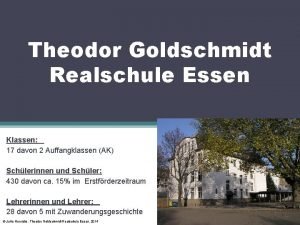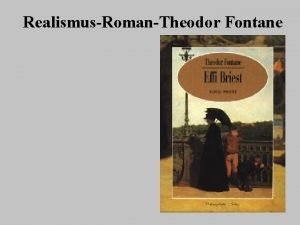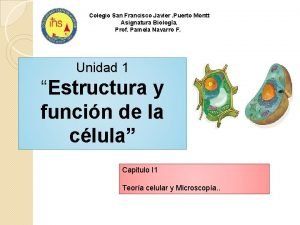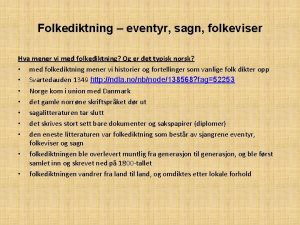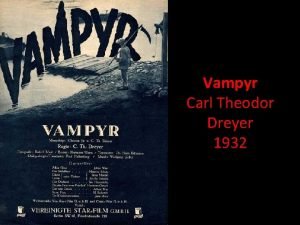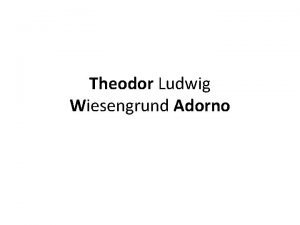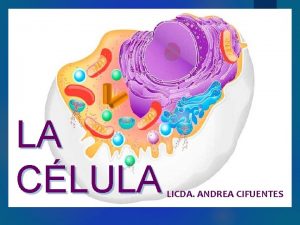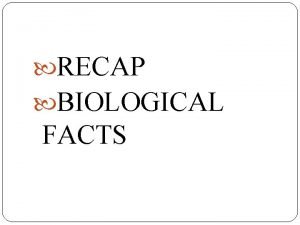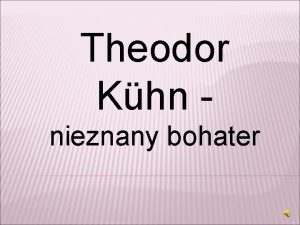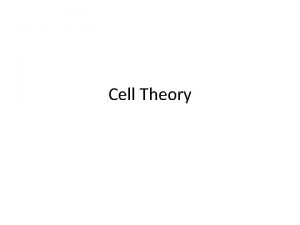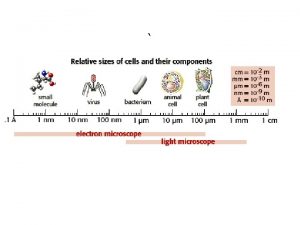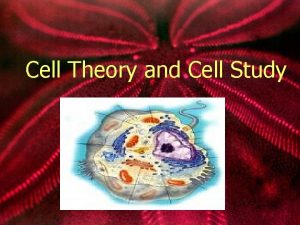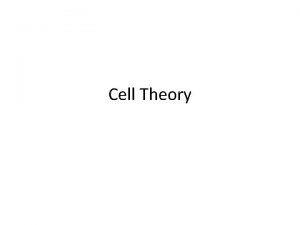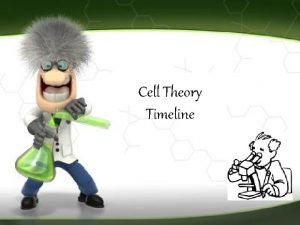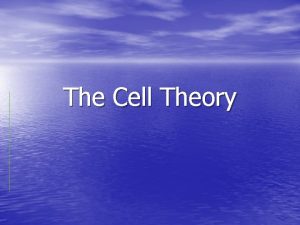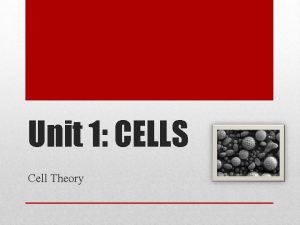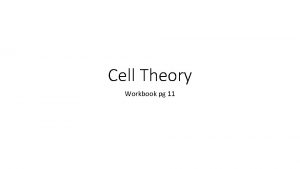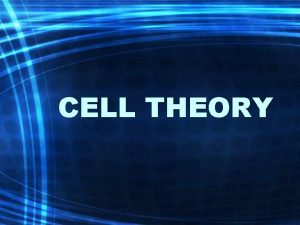What is a cell The Cell Theory Theodor















- Slides: 15

What is a cell ?


The Cell Theory (Theodor Schwann) 1. All living organisms are made of either one (unicellular) or more cells (multi cellular). 2. The cell is the basic unit of life. 3. All cells arise from preexisting cells.


Animal cell

Plant cell

Similarities between animal and plant cell : - both have nucleus -both have membrane bound organelles - both have cytoplasm Differences between animal and plant cell : - shape - vacuole (size) - size - Plant cell has a rigid cell wall in addition to cell membrane and it has chloroplast.

WALT know the functions of the organelles in a cell. http: //sciencespot. net/Media/Cells. Organelles Wkst. pdf

Prokaryotic Cell - Bacteria are prokaryotes, lacking welldefined nuclei and membrane-bound organelles. - Have many shapes and sizes, from minute spheres, cylinders and spiral threads to flagellated rods and filamentous chains. - Found practically everywhere on Earth and live in some of the most unusual and seemingly inhospitable places.

Eukaryotic Cell - An animal cell has several membranebound organelles. - The genetic material DNA resides mainly in the nucleus, which is surrounded by a double membrane with numerous openings called nuclear pores. - Have structures such as centrioles, lysosomes, and cilia and flagella that are not typically found in plant cells.

Eukaryotic Cell - Plant cells are also eukaryotic cell. - They have membrane bound organelles. - Larger than animal cells and are typically rectangular or cube shaped. - Have cell wall, large vacuole and plastids, such as chloroplast. -

Video • https: //www. youtube. com/watch? v=URUJD 5 NEXC 8

Task : • Watch the video and fill in the blanks. https: //www. youtube. com/watch? v=1 Z 9 pq. ST 7 2 is Bozeman Science Task : worksheets


Scientific Units of Measurement centimeter milimeter micrometer nanometer Cells – micrometers Total magnification = Ocular lens/Eyepiece x Objective lens Magnification = Image size/Actual size
 Robert hooke matthias schleiden theodor schwann
Robert hooke matthias schleiden theodor schwann Theodor goldschmidt realschule essen
Theodor goldschmidt realschule essen Thodor fontane
Thodor fontane Foto de theodor schwann
Foto de theodor schwann Draugen sagn
Draugen sagn Theodor lukin yelin
Theodor lukin yelin Carl theodor remy
Carl theodor remy Theodor ludwig wiesengrund adorno
Theodor ludwig wiesengrund adorno Theodor fontane wichtigste werke
Theodor fontane wichtigste werke Theodor heuss werkrealschule böblingen
Theodor heuss werkrealschule böblingen Theodor homburger
Theodor homburger Theodor scwann
Theodor scwann Theodor fontane powerpoint präsentation
Theodor fontane powerpoint präsentation Theodor heuss schule preetz
Theodor heuss schule preetz Theodor schwann facts
Theodor schwann facts Theodor adorno beatles
Theodor adorno beatles

